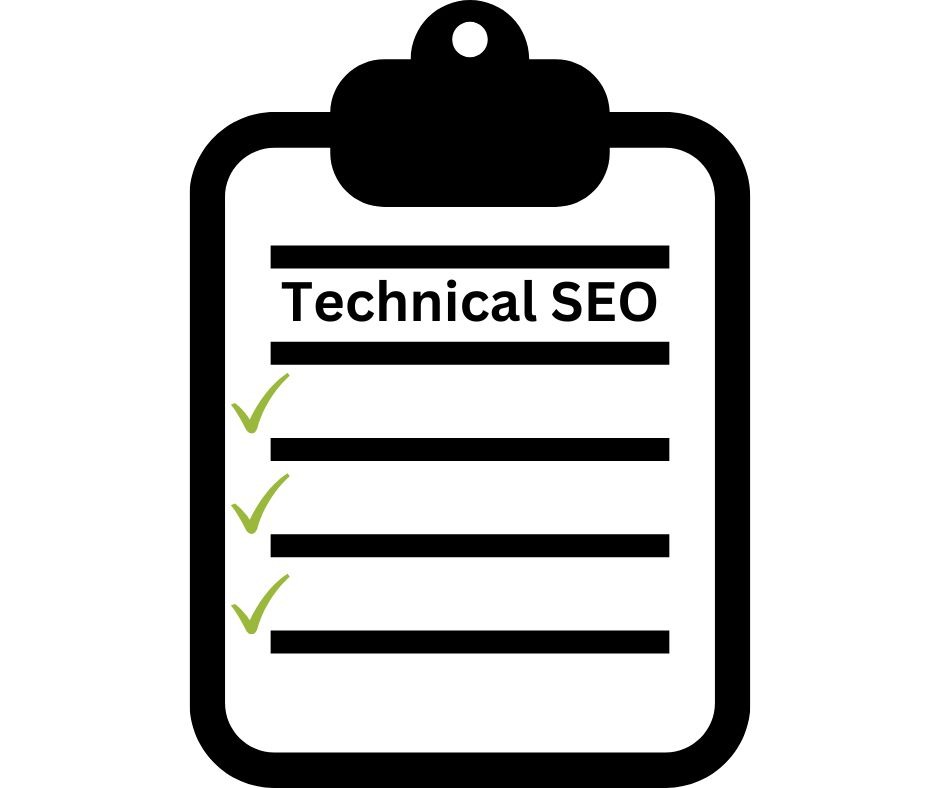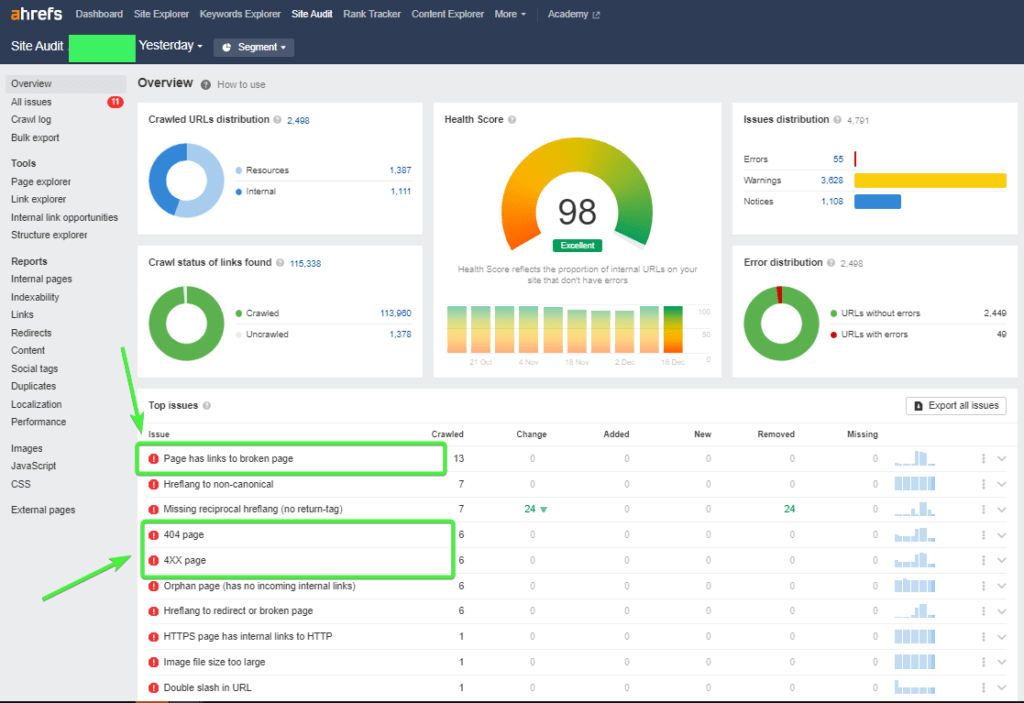- Home
- Services
- SEO Simplified
- How to do Keyword Research Like a Pro: A Comprehensive Guide
- Complete Guide to On-Page SEO
- Latest Off-Page SEO Techniques
- The Ultimate Technical SEO Checklist
- SEO Analyst
- Project Management
- Content Marketing
- Social Media Marketing
- Web Hosting
- Search Engine Marketing
- WordPress
- SEO Tools
- Affiliate Marketing
- Email Marketing
- Local SEO
- CRMs
- Landing Pages
- SEO Store
- Best SEO Tools
- Blog
- About
- Contact
Technical SEO is a practice that focuses on technical aspects such as website speed, mobile optimization, and site security. It is not just about making your site faster or more secure.
This process entails making sure that your site’s code is optimized, that you have done the necessary research for keywords, that you have properly implemented meta tags, etc.

In the whole process of search engine optimization, technical SEO stands as one of the most complex and difficult because it requires some level of coding knowledge and experience to be able to detect, interpret and fix issues a website might be facing.
No need to worry because we will give detailed guidance on how to go about handling the technical SEO of your website or that of your client.

Technical SEO and How It Impacts the User Experience
Technical SEO issues can impact the user experience in many different ways. For one, it can impact the time it takes to load a webpage or how easy it is to navigate through the website.
If a website has poor technical SEO, then there’s a good chance that people will not be able to find what they’re looking for on that site which in turn will lead them to leave and go to another website.
If you want your site to rank higher on Google, then you should make sure that your site has good technical SEO. That way people will be able to find what they’re looking for on your site faster than before and stay there longer than before as well.
Technical SEO is an important part of the user experience. It is not just about the design; it is also about making sure that the website has all of the necessary coding and technical requirements to rank higher on Google. It takes a lot of time and effort to create a good technical SEO roadmap, but it can have a big impact on how users experience your website. It can lead to higher rankings, more traffic, and better conversion rates.
Technical SEO Checklist - What you need to do?
Technical SEO issues can be complex and elusive. These issues can have a serious impact on your site, lowering rankings, decreasing traffic, and limiting the effectiveness of your content marketing efforts.
Regardless of the size or scope of your marketing operation, it is vital that you take the time to understand these issues so that you can avoid them in the future.
That said, note that Technical SEO is not just about the technical skills required to optimize a website. It’s about understanding the needs and goals of your customers to provide them with a better experience.

Use HTTPS (Not HTTP)
HTTPS (Hypertext Transfer Protocol Secure) is a more secure way of communicating over the internet and it also provides a higher level of privacy for users. HTTPS encrypts data in transit between your browser and the server, which makes it harder for attackers to read or modify data as it is sent from one end to another.
Google made it clear on August 07, 2014, that security is a top priority and also informed that it is a ranking factor.

Identify And Fix Crawl Errors and Optimize Crawl Budget -Identify and Fix Crawl Depth Issues)
When crawling a website, the crawler can get stuck in an infinite loop or it can get lost in a deep crawl. When that happens, we need to identify and fix the crawl errors.
The crawl budget is the total number of URLs that a search engine crawler will visit during an initial visit to your site. It’s important to keep your crawl budget as low as possible to avoid getting penalized by Google for wasting its time and resources.
When crawling a website, it’s natural for the crawler to go deep into some pages but not for all of them. We need to identify which pages are too deep and fix them so that we can optimize our crawl budget.
Tips to optimize crawl budget:
- get rid of duplicate content
- no-index low-quality pages/posts
- ensure the sitemap is updated
Improve the Speed of Your Website
It is a known fact that on average the bounce rate for most websites is around 26 to 70%, but having a website that loads slowly can easily see your bounce rate go as high as 90% or more.
Google has a need for speed and so should you too.
Website speed is an important factor when it comes to the consumer experience. The faster the website, the more likely that people will spend more time on it. When a site loads slowly, people are more likely to leave and go back to their search engine results page.
Websites can be slow for a number of reasons including too many requests from the server, high file size, and slow internet connection.
To check how fast your website is, you can use the PageSpeed Insights tool by Google

There are many ways to improve your site’s speed including:
- optimizing images
- compressing files
- using a CDN (Content Delivery Network)
- caching content for repeat visitors
If you are using WordPress as CMS, then the following plugins can help a great deal in speeding up your website.
- reSmush
- LiteSpeed Cache
Identify And Fix Broken Links
A broken link is a link pointing to a deleted page. In most case, broken links occur after a page is deleted or the url was tampered with.
Broken links are not only a nuisance for visitors to your website but can also lead to a lower ranking in search engine results pages.
Fixing broken links is not difficult, but it does require some time and effort. You need to find the broken link and fix it by either correcting the URL or removing the link.
Regular site audits can greatly help identify and fix broken links.
Using Ahref for example, a typical site audit will look thus:

Clicking on any issue will expand it, wherein you have a brief summary of the nature of the issue, the affected pages, and more


Ensure Your Website is Mobile-Friendly
Google now uses mobile-first indexing; meaning the mobile versions of websites are used to determine ranking.
It therefore goes without saying that your website should be optimized for the best mobile experience; not just for the users but also for the search engine crawlers.
To check how your website is performing on mobile, you can use Google’s Mobile-Friendly test:

Google Search Console is the best place to detect mobile-usability issues

Some common mobile-usability issues and their fix:
- Clickable elements too close together: Avoid having many links and other clickable elements such as banners within small text or paragraphs.
- Content wider than screen: Always adjust the padding and test on mobile to ensure all the text and images can be viewed without a user having to zoom in and out.
- Text too small to read: Page builders like Elementor make it easy to adjust the font size of pages.

Luckily, most of these issues can be fixed by simply installing an AMP plugin:

PRO TIP
Test
your different browsers and across multiple screen sizes to make sure all
potential usability issues are detected.
Use Proper URL Structure
The best way to create a good URL structure is to use keywords in your URLs that are relevant to the content on the page.
Proper URL structure is essential for the success of a website. It improves user experience and search engine optimization.
In the settings tab of WordPress, click on Permalink

In the common setting, set it as “post name” and save

Tips to make your URLs user-friendly:
- use your target keywords
- keep it short and descriptive
Implement Structured Data
Structured data is the standardized way of serving search engines with important information about the content of your page.

The HTML language used for structured data is called schema.
Using schema can help your website get into the featured snippet of Google for a given search query.

Fix Duplicate Content Issues
The duplicate content error happens when the same content is published on more than one page on a site. This error is often common when you install multilingual a plugin and fail to set it up properly. When this happens, Google may penalize the site and it will not rank as well in search results.
There are several ways to fix duplicate content issues. One way is to use canonical tags, which tell search engines which URL should be considered the original page for that content.
Another way to fix duplicate content issues is by using 301 redirects, which tell search engines that there has been a change in link structure and you want them to update their records accordingly.
Identify And Fix Temporary 302 Redirect Issues
A redirect chain is a series of redirects that are used to send a user from one page to another. It entails redirecting a page to an already redirected page. Search engines such as Google nor the users should be redirected to several pages/links.

A redirect loop is a series of sequential, circular redirects that send the user back to the same page.

A common use for redirect loops is when a website is undergoing an update and needs to be taken offline. The site owner can add a temporary URL to their site that points back to the homepage.
Why Pay Attention to Technical SEO?
The Importance of Technical SEO and Why You Should Keep Up with the Latest Updates
Technical SEO just as off-page SEO is an essential aspect of search engine optimization. It’s a necessary part of any SEO strategy, and it is important to keep up with the latest updates from Google.
This is why it’s so important for companies to hire a technical SEO specialist who can help them understand where they are falling short and how they can improve their site in order to stay competitive.
Technical SEO is a crucial part of the search engine optimization process because it ensures that your website is visible to search engines and has a better chance of ranking higher.
Having read this guide, you should be able to handle most technical SEO issues of your website or that of your client.

